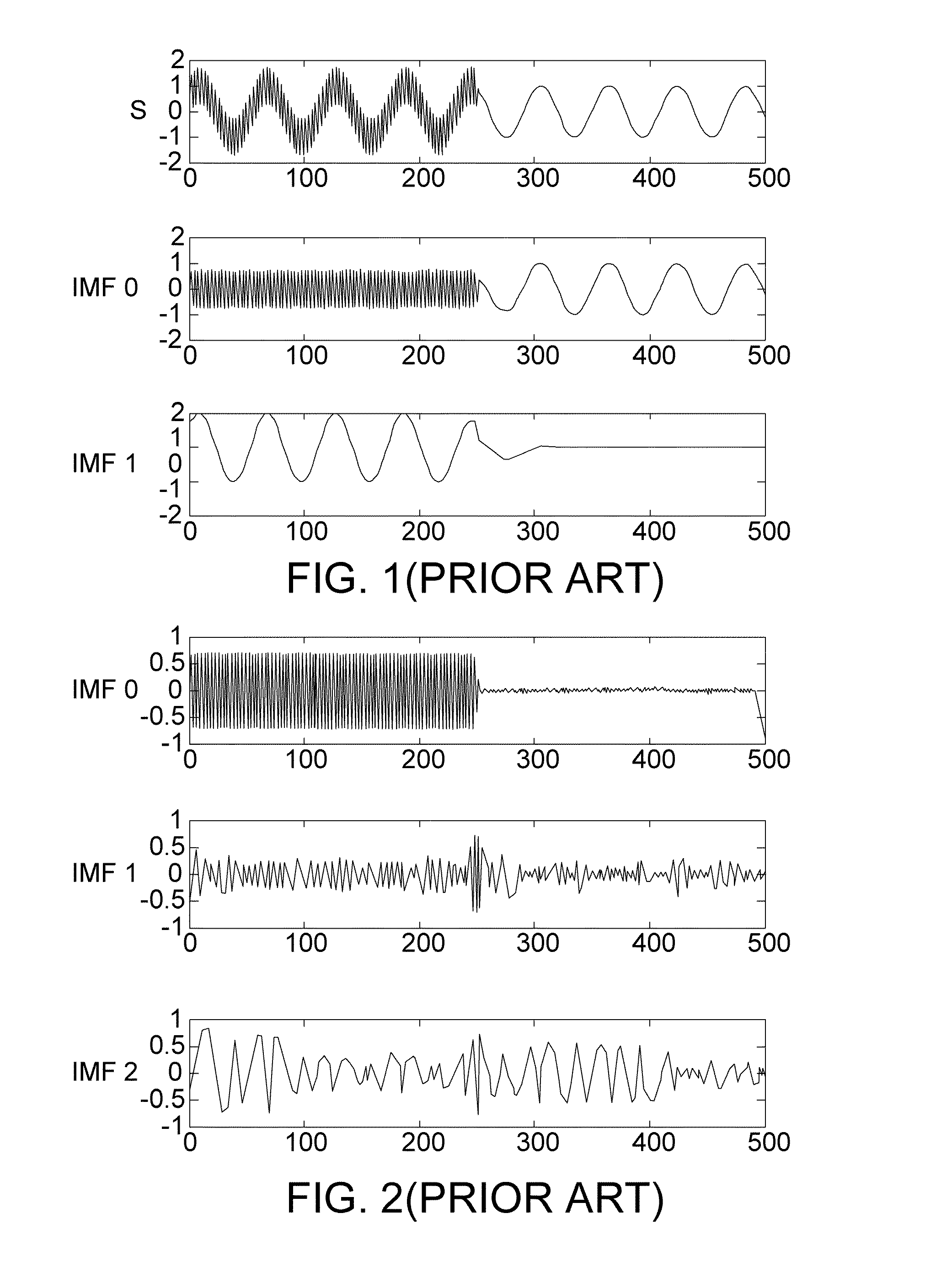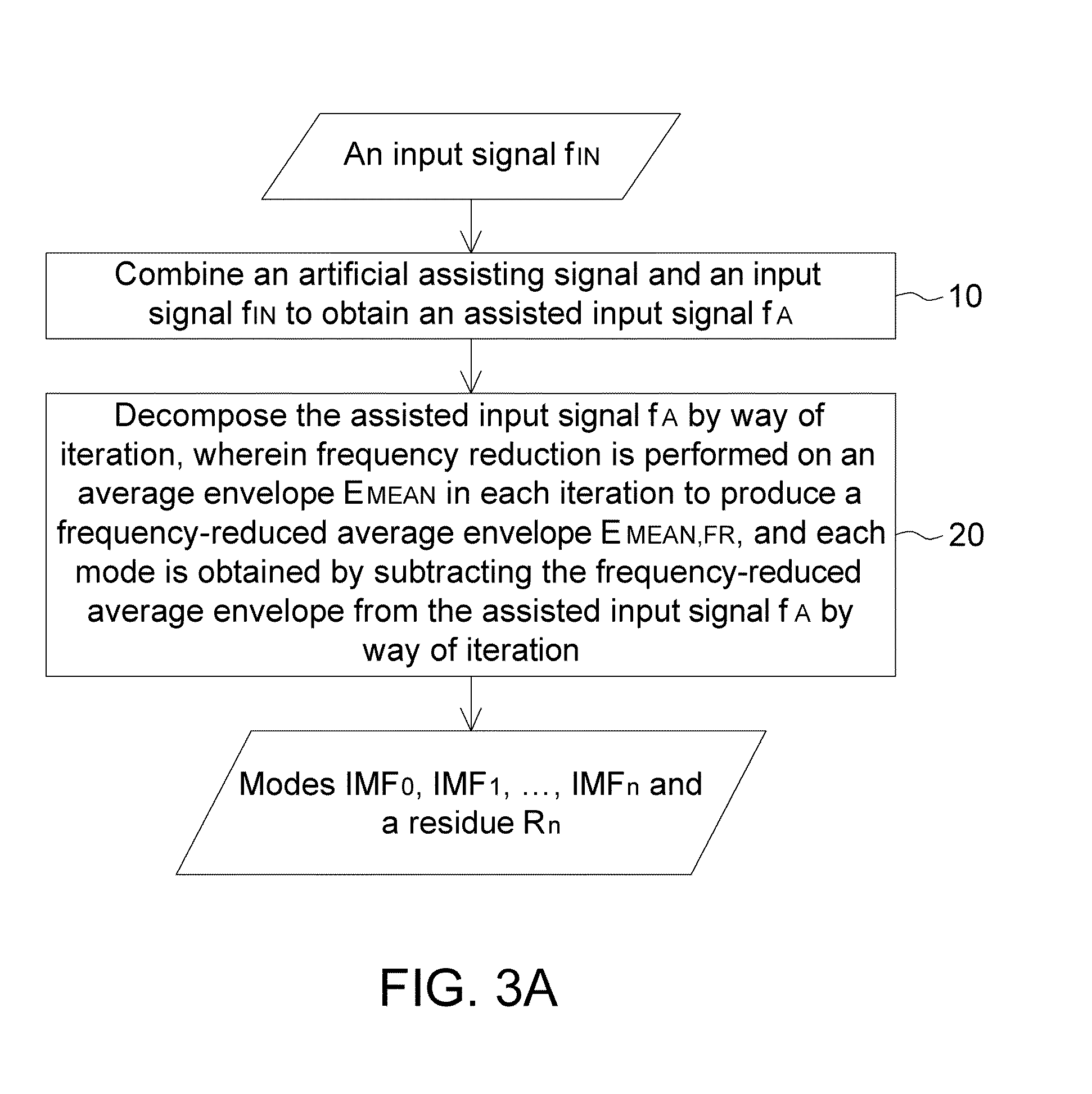Signal Processing Method for Hierarchical Empirical Mode Decomposition and Apparatus Therefor
a hierarchical empirical and mode decomposition technology, applied in the field of signal processing methods, can solve the problems of difficult adaptation or application of two-dimensional interpolation function based emd methods to high-dimensional data, neglected relationship between rows and columns in images, and still critical problems to be resolved in the empirical mode decomposition method provided by n. e. huang, etc., to avoid the occurrence of mode mixing or reduce the effect of mode mixing
- Summary
- Abstract
- Description
- Claims
- Application Information
AI Technical Summary
Benefits of technology
Problems solved by technology
Method used
Image
Examples
Embodiment Construction
[0028]An embodiment is directed to an empirical mode decomposition (EMD) method, which enhances the orthogonality among the obtained modes (i.e., intrinsic mode functions) by using an artificial assisting signal and frequency reduction and is applicable to the empirical mode decomposition of one-dimensional or multi-dimensional data or signals. FIG. 3A shows a flowchart of a signal processing method for performing empirical mode decomposition according to an embodiment of the invention. As indicated in step 10, an artificial assisting signal and an input signal fIN are combined (e.g., added together) to obtain an assisted input signal fA to assist the search of extrema of the artificial assisting signal fA. In step 20, the assisted input signal fA is decomposed according to EMD method by way of iteration to obtain a plurality of modes, wherein frequency reduction is performed on an average envelope EMEAN in each iteration to produce a frequency-reduced average envelope EMEAN,FR, and...
PUM
 Login to View More
Login to View More Abstract
Description
Claims
Application Information
 Login to View More
Login to View More - R&D
- Intellectual Property
- Life Sciences
- Materials
- Tech Scout
- Unparalleled Data Quality
- Higher Quality Content
- 60% Fewer Hallucinations
Browse by: Latest US Patents, China's latest patents, Technical Efficacy Thesaurus, Application Domain, Technology Topic, Popular Technical Reports.
© 2025 PatSnap. All rights reserved.Legal|Privacy policy|Modern Slavery Act Transparency Statement|Sitemap|About US| Contact US: help@patsnap.com



